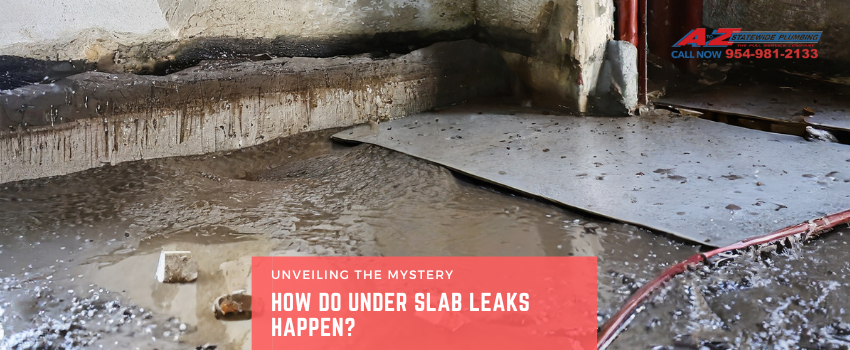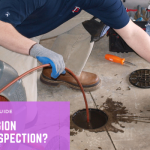
Imagine you’re relaxing at home when suddenly, you notice a mysterious water stain on your floor. It’s a moment of dread as you realize you might be facing an under slab leak. These hidden plumbing issues can be costly and disruptive, but understanding how they occur can help you prevent and address them effectively. In this blog post, we’ll delve into the causes and signs of under slab leaks to help you navigate this potentially challenging situation.
1. Age and Corrosion
Over time, plumbing pipes can corrode and deteriorate, especially if they are made of materials like galvanized steel or iron. As these pipes age, they become more susceptible to leaks. Corrosion can create weak points in the pipes, eventually leading to cracks or holes that allow water to escape beneath the concrete slab.
2. Soil Shifting
The ground beneath your home is constantly shifting due to changes in temperature, moisture levels, and natural settling. These shifts can place stress on your plumbing system, causing pipes to shift, bend, or develop small fractures. Over time, these minor issues can evolve into major under slab leaks.
3. Abrasion and Pressure
In some cases, pipes may rub against rocks, debris, or other pipes within the soil. This friction can gradually wear down the pipe’s surface, causing it to weaken and develop leaks. Additionally, high water pressure within your plumbing system can contribute to pipe stress and eventual leaks, particularly if the pressure is not regulated.
4. Tree Roots
The relentless growth of tree roots can infiltrate your plumbing system and wreak havoc beneath your home. Roots are naturally drawn to sources of water, and they can penetrate pipes, causing them to crack or collapse. This is a common cause of under slab leaks, and prevention often involves regular maintenance and root barriers.
5. Poor Installation
Improper installation of plumbing pipes beneath the slab can lead to future problems. If pipes are not adequately secured, have sharp bends, or lack proper insulation, they may be more prone to leaks. Poor workmanship can contribute to premature pipe failure.
Signs of Under Slab Leaks
Detecting an under slab leak early is crucial to prevent extensive damage. Look out for these common signs:
– Unexplained Water Stains: Water stains on your floors or walls, especially in areas far from plumbing fixtures, may indicate an under slab leak.
– Mold or Mildew: Persistent moisture beneath the slab can promote mold and mildew growth, leading to a musty odor and health concerns.
– Low Water Pressure: A decrease in water pressure in your faucets and fixtures may suggest a leak within the pipes.
– Sounds of Running Water: If you hear the sound of running water when no faucets are turned on, it could be a sign of a hidden leak.
– Sudden Spike in Water Bills: A noticeable increase in your water bills with no apparent reason may be attributed to an under slab leak.
Under slab leaks can be a homeowner’s nightmare, but understanding how they happen and being vigilant for early warning signs is the first step in preventing extensive damage. Regular plumbing inspections, appropriate maintenance, and addressing leaks promptly can save you money and headaches in the long run. If you suspect or discover an under slab leak, it’s essential to consult with a professional plumber to assess and resolve the issue, ensuring the integrity of your home and your peace of mind.






